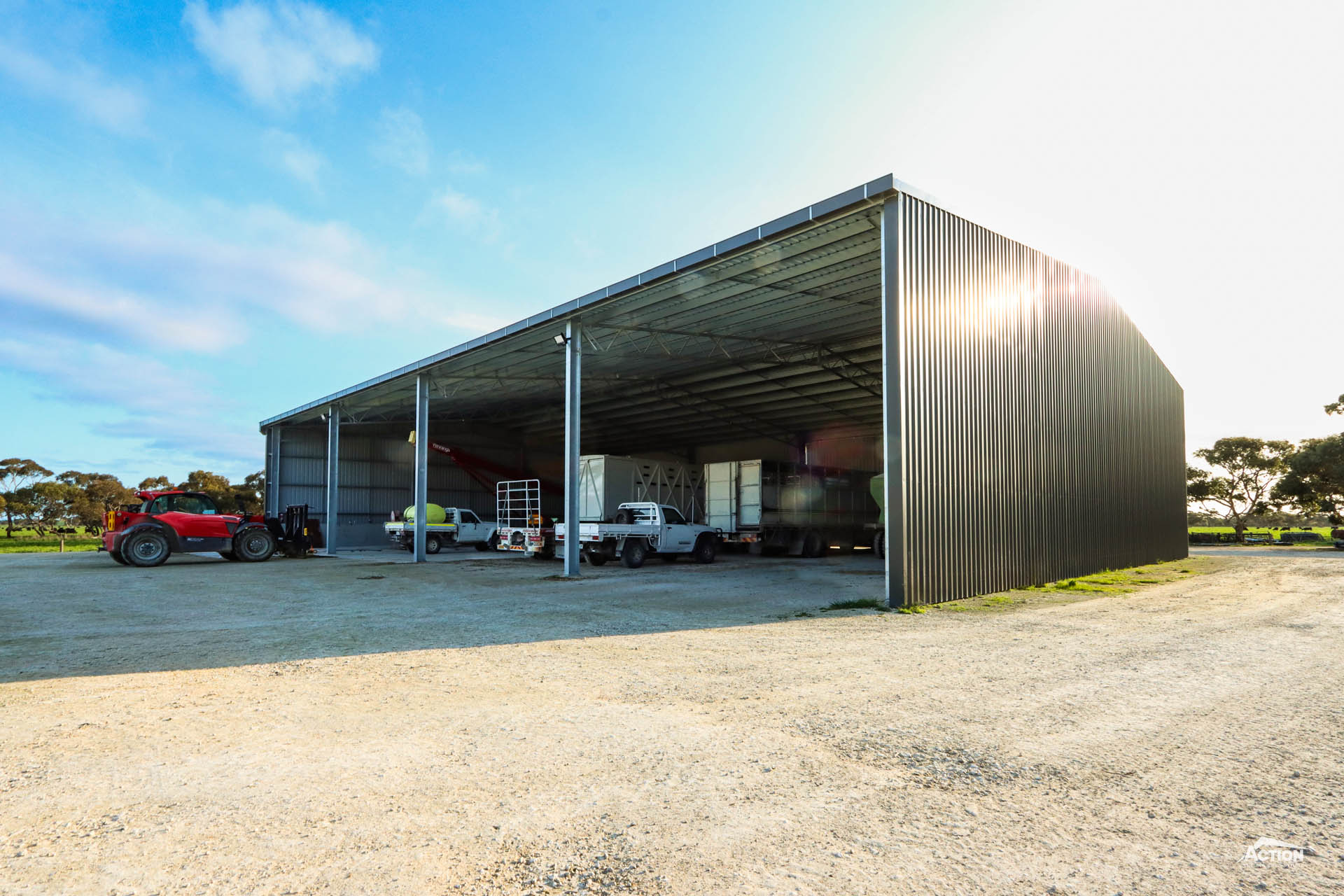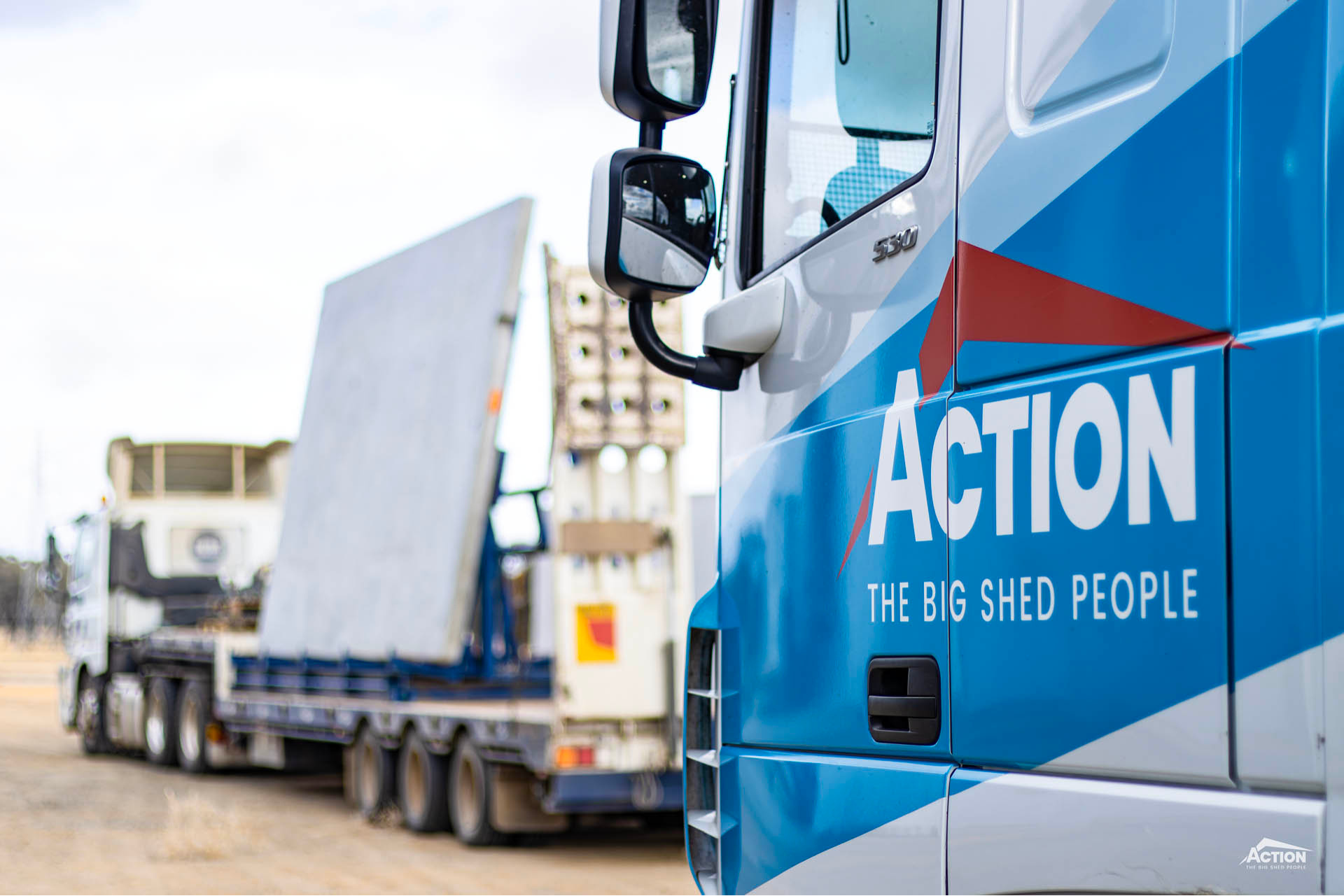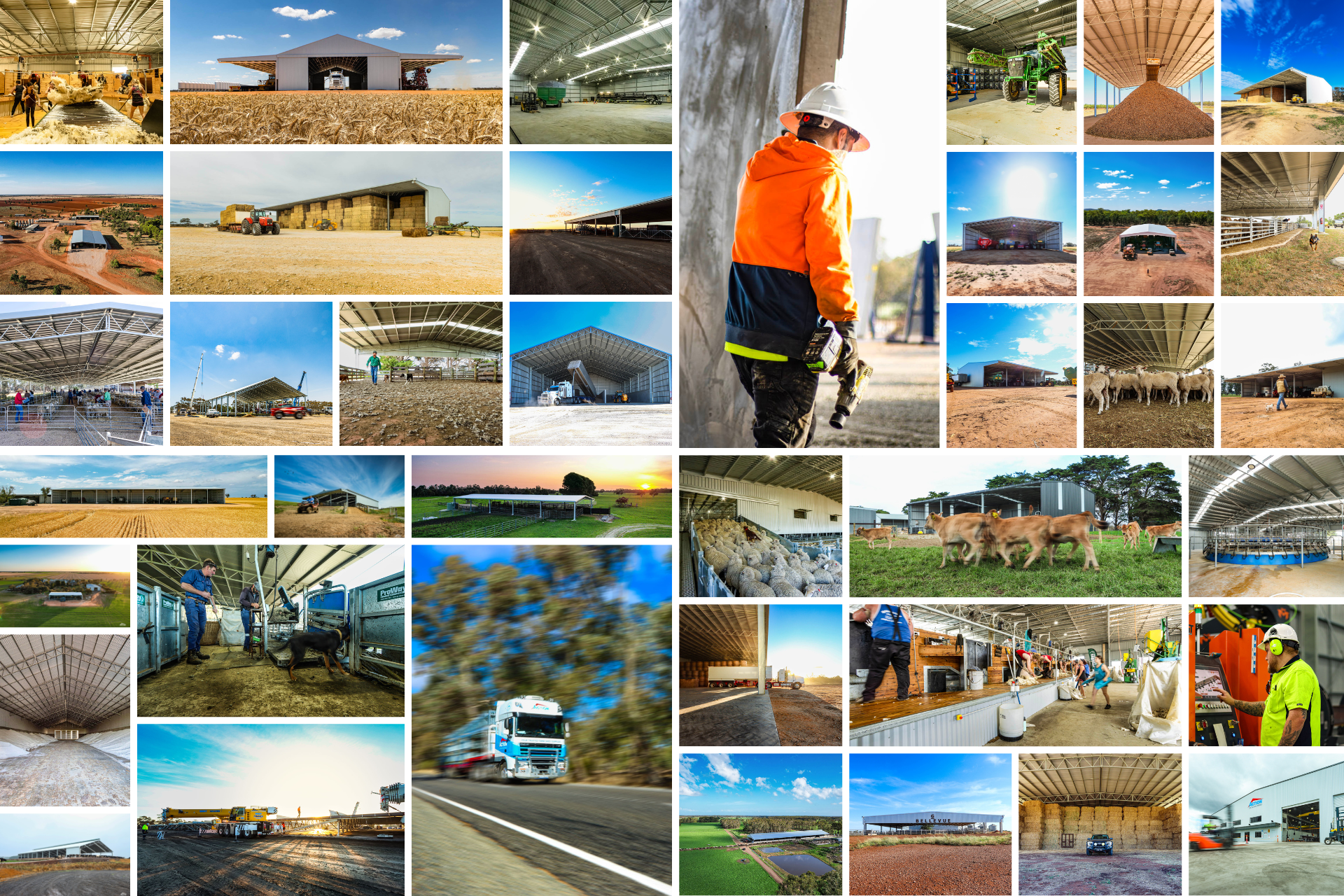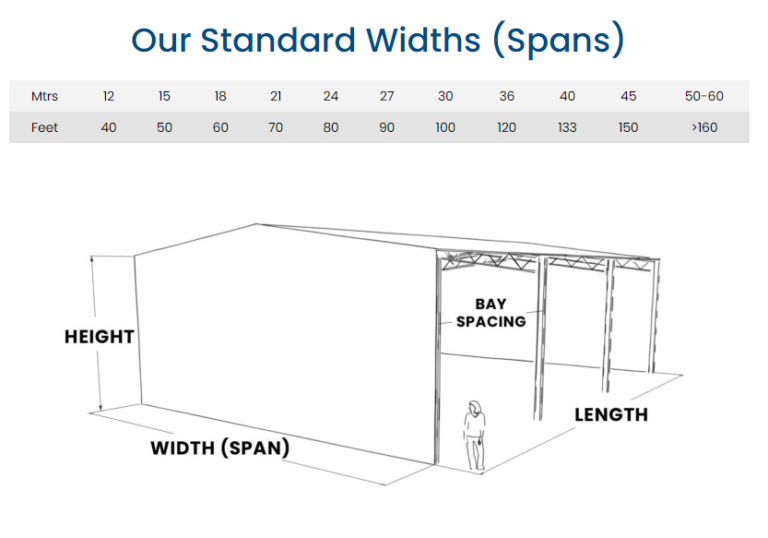Building a fertiliser shed has been very beneficial for cropping enterprises in recent years.
Having dedicated on-farm fertiliser storage allows you to avoid fluctuating fertiliser prices and shortages, saving you money and helping to prevent delays at cropping.
Fertiliser storage sheds have become a popular option because they are safe and effective – and are a versatile investment.
Need to secure your fert supply? Looking to increase your on-farm storage? Building a fertiliser shed?
With fertiliser sheds becoming more common, so have the questions!
Common Questions About Building A Fertiliser Shed, Answered
In this video, Jason and Lennie answer common questions including: What Is The Best Fertiliser Shed Design? and What Size Fertiliser Shed Do I Need?
Watch and learn – and then scroll on to find more information and additional questions and answers.
We hope you found Jason and Lennie’s discussion on building a fertiliser shed helpful! Here’s the link the Standard Fertiliser Shed Range.
Find more information on each of these questions below.
Plus, bonus questions –
7. What Is Bulk Density?
8. Will I Be Able To Tip Inside My Fertiliser Shed?
9. Will An Open Gable Shed Provide Enough Weather Protection?
10. What Is The Standard Fertiliser Shed Range?
Top 10 Questions About Building A Fertiliser Shed, Answered
If you are looking for more information – or if you would prefer to read about it rather than watch a video – we have listed the top 10 questions (and answers!) about building a fertiliser shed below.
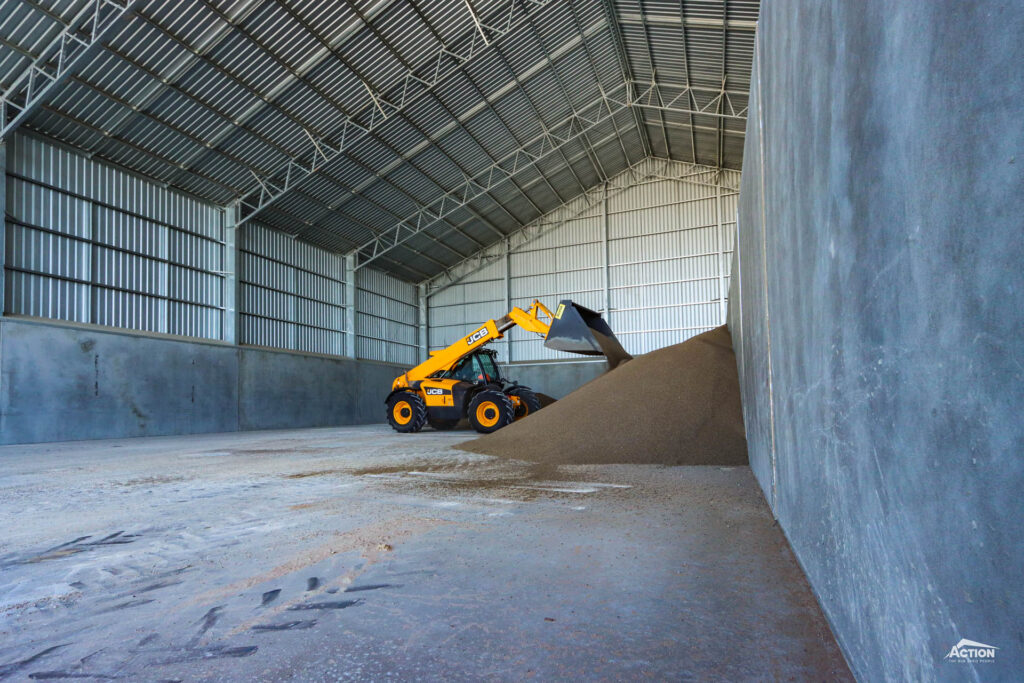
1
What Is The Best Way To Store Fertiliser?
Fertilisers should be stored in a cool, dry area to prevent them from deteriorating.
The best way to achieve this is an enclosed fertiliser shed with concrete panels. This is also much safer than storing fertiliser in silos.
For smaller amounts of granular fertiliser, it may not be feasible to build a dedicated fertiliser storage shed.
Instead, one option is to include concrete panels in one or two bays of a machinery shed or hay shed.
Remember to keep fertiliser and the machinery or produce stored in the shed separated to avoid fires and contamination. It would also pay to check that your insurance policy allows co-storing.
John Bennett’s Hay Shed With Concrete Panels For Fertiliser
We recently chatted with John to learn about how his shed has provided a versatile storage option throughout the year for fertiliser, hay or machinery.
2
What Is The Best Fertiliser Shed Design?
A fully enclosed shed with concrete panels is the recommended design for a fertiliser shed as it provides excellent weather protection and excellent corrosion protection.
Another popular option is an open gable configuration with concrete panels .
Both of these designs are effective and versatile.
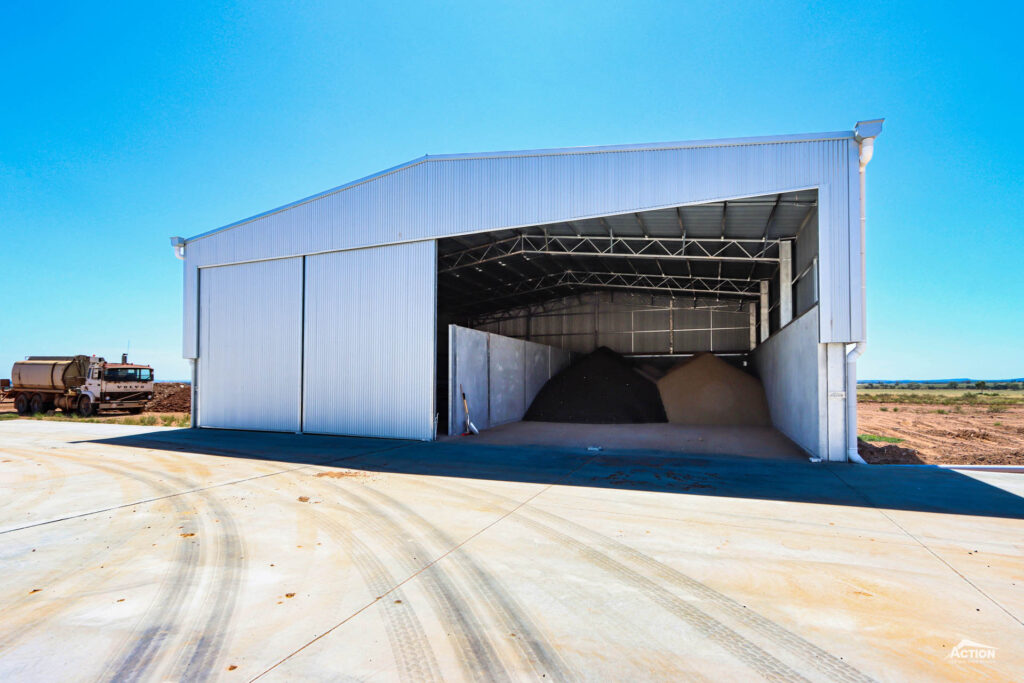
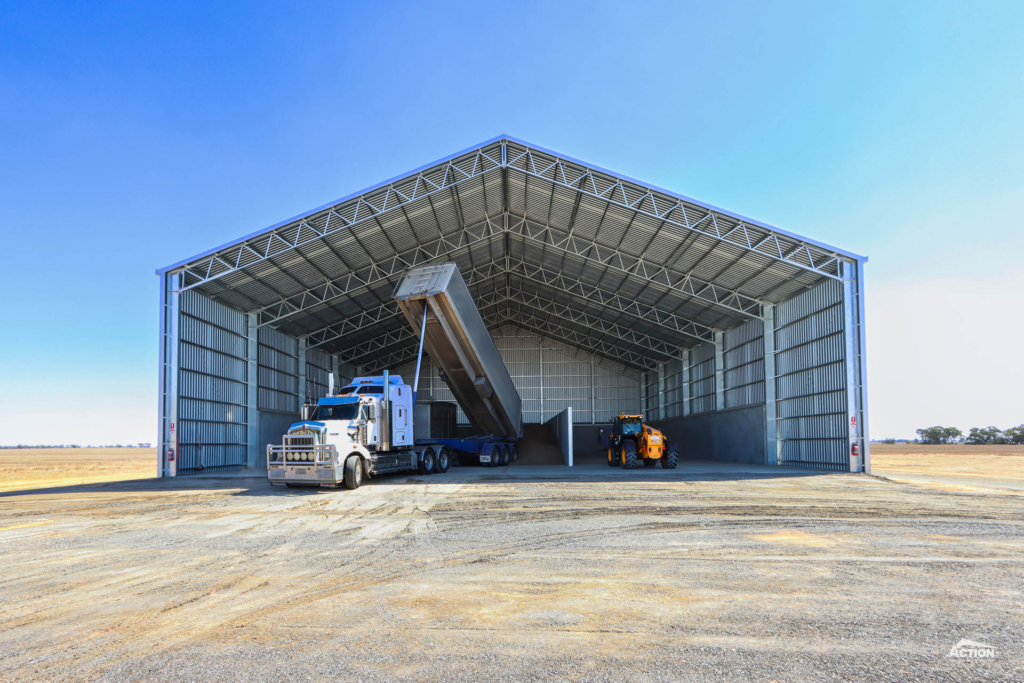
3
What Size Fertiliser Shed Do I Need?
There are a number of factors that will determine what size fertiliser shed you should build.
The most important one is obviously the amount of fertiliser being stored.
The type of fertiliser being stored should also be considered as the bulk density can vary between fertilisers. This will dictate how much of each fertiliser you can store in your shed.
Your storage requirements will also help determine what size shed you need. For example, if you want to tip inside the shed you may need to increase the height or roof pitch.
The smallest fertiliser shed size we build is an 18m x 12m x 6m fully enclosed shed which can store about 400 tonnes.
Other popular sizes include:
- 24m x 12m x 6m. Stores approx. 600 tonnes.
- 32m x 18m x 6m. Stores approx. 1,200 tonnes.
Typically, the bigger the shed the more cost-effective per tonne – which leads us to our next question: How Much Does It Cost To Build A Fertiliser Shed?
4
How Much Does It Cost To Build A Fertiliser Shed?
5
What Are The Benefits Of Concrete Panels? Can I Retrofit Panels?
Concrete panels are a must-have inclusion when building a fertiliser shed.
This is because concrete panels provide excellent corrosion protection, protecting the shed cladding and increasing the longevity of the shed.
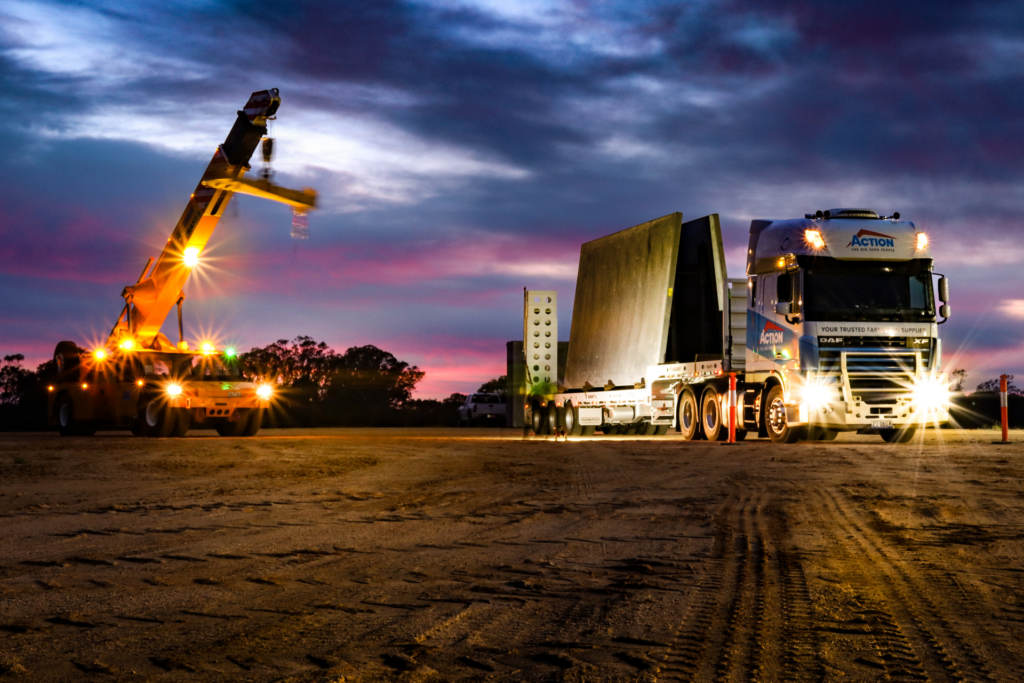
Concrete panels also making loading and unloading the shed easier – and using removable T-walls for segregation increases storage flexibility, giving you the option to store one product or multiple products.
Additionally, because we manufacture concrete panels in-house, they can be a cost-effective addition to your shed build.
Can you retrofit concrete panels?
Yes, you can retrofit concrete panels to an existing shed to convert it to fert storage.
Retrofitted concrete panels do cost more compared to the panels in a purpose-built shed though. This is because when retrofitting concrete panels to an existing shed, there is often additional steelwork required to accommodate the panel and fertiliser loadings. Whereas in a new shed build, the structure of the shed frame is already designed and engineered to accommodate the loadings.
While the panels may cost more, if you have the shed available, retrofitting panels may work out to be the more cost-effective and viable option for you.
6
What Is The Lead Time For A New Fertiliser Shed?
If you have a deadline in mind for your fertiliser storage shed project, then you might be wondering about time frames.
The current lead time for building a fertiliser shed is currently around four months to six months.
Now onto our bonus questions!
7
What Is Bulk Density?
Bulk density is the total mass of the product divided by the total volume of the space it occupies.
This means it takes into account the air space between the particles so, generally, the finer the fertiliser, the lower the bulk density.
This is an important consideration, particularly when storing multiple products in your shed.
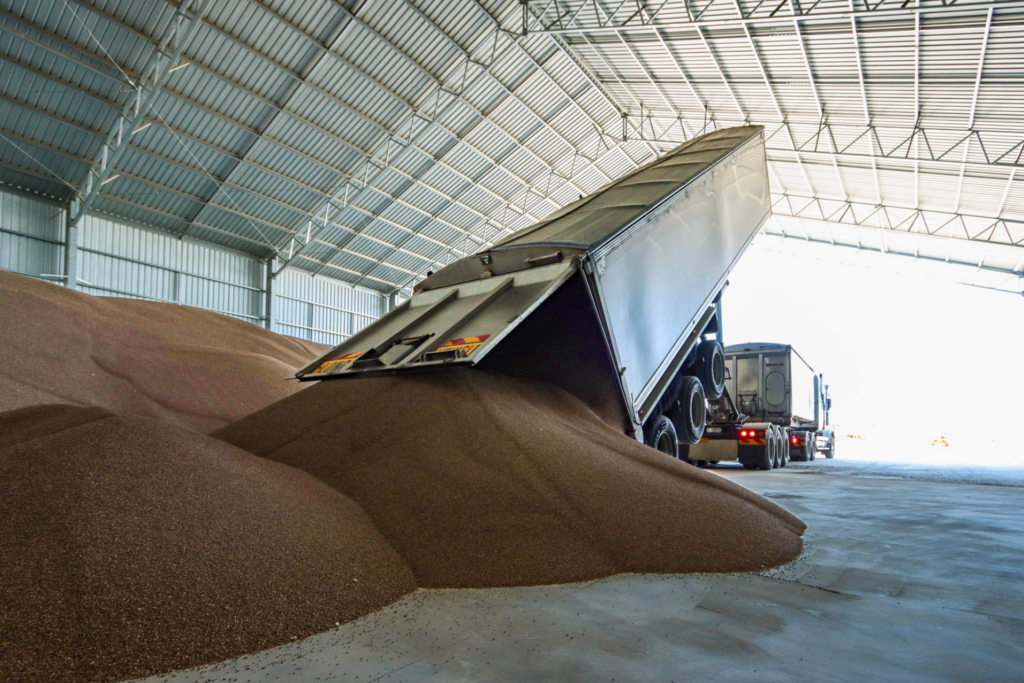
For example, the bulk density of Urea (at 750kg/M3) is approximately the same as storing 1/3 MAP (1000kg/M3) and 2/3 Urea combined.
Segregating multiple products in your shed also reduces the overall capacity of your shed. This is why we recommend using removable t-walls to achieve your segregation requirement. This gives the flexibility of being able to store one bulk product or segregating multiple products as needed.
Our fertiliser storage calculator is a handy tool and takes bulk density into account.
Fertiliser Calculator
To help you determine the best shed size for storing fert, use this calculator.
Enter your shed size and fert type in the fields and the storage volume and total tonnage will be calculated.
8
Will I Be Able To Tip Inside My Shed?
9
Will An Open Gable Shed Provide Enough Weather Protection?
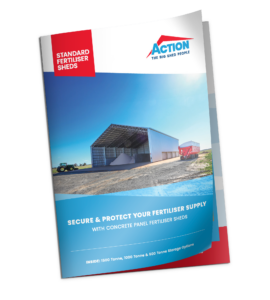
10
What Is The Standard Fertiliser Shed Range?
We have developed a range of standard fertiliser shed designs with sizes ranging from 500 tonne to 1500 tonne storage capacity.
This range includes two configuration options which are easily customised with concrete t-walls.
We have also provided handy project price estimates for easy budgeting.
Download your copy of the brochure – here.
That’s a wrap on fertiliser shed questions! If you are building a fertiliser shed and are looking for more ideas and advice, check our our Learning Hub or give us a call on 1800 687 888.


